Looking for the best things to do in Seville, Spain? Between intoxicating orange blossom, cool courtyards and history that changed the world, it’s time to explore the largest city in Andalusia. Get your free Seville checklist here.
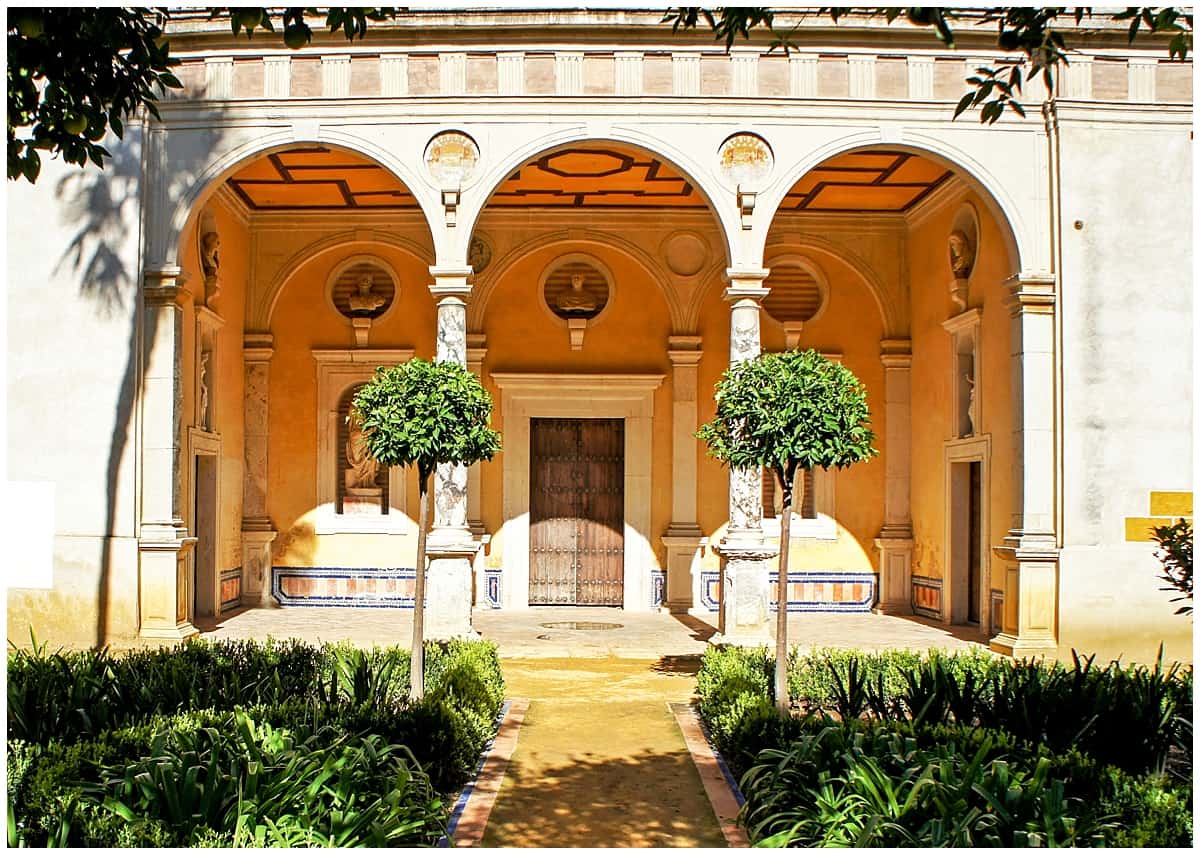
Inside Casa de Pilatos – one of the best things to do in Seville
The Best Things to do in Seville, Spain
Seville also works well as part of this southern Spain itinerary. And make sure to leave plenty of time for visiting the best tapas bars in Seville. Planning on travelling the country for a while? Check out our guide on how to make the most of a summer in Spain.
Why Visit Seville?
Welcome to the city where fountains bubble in quiet courtyards while passions flame in the streets. I lived in Seville (pronounced Se-beee-ya!) for nearly four years and could write about it for forty or more.
Seville ranks as the largest city in Andalusia and the hottest in Europe.
Home to flamenco, inspiration for Carmen and the springboard for Columbus’ voyage to the new world, Seville never bores her guests. And so it takes some effort to filter this list down and present to you the best things to do in Seville, Spain.
Note! If you book or buy through links on this page, we may earn a small commission at no extra cost you. Cheers!
Map of the Best Things to do in Seville
How to plan your trip to Seville
- Where to stay in Seville to make the most of your time
- Where to eat in Seville: discover the hidden tapas bars that tourists miss.
- What to buy in Seville: shop for souvenirs without regret!
Why I Love Seville
Seville is sexy, sassy and very self-confident – and it prides itself on having a good time.
It’s a city in love with tradition; you’ll find posters for bullfights and black barrels for sherry on many a street corner.
And those vibrant spotted dresses with ruffles and frills? Those aren’t just there for tourists. They’re worn every year at Feria, complete with matching heeled shoes and huge flowers pinned to slicked back hair.
Legs of jamon still hang from the ceilings, next to religious calendars depicting statues of virgins studded with tears. Then Holy Week, or Semana Santa, in Seville sees some of the world’s most spectacular Catholic processions, with both crowds and incense filling the streets all day and all night. You may even spot the Spanish royal family there.
So, here are my Seville must-sees, divided into groups to make it easier for you.
Recommended
I love sharing the best travel resources I can find.
- I never book a flight without looking on Skyscanner first
- My favourite one stop shop for airport transfers, food tours & excursions is Get Your Guide
- Out of the big accommodation machines, I use Expedia and Booking.com the most
- I’ve hand-picked useful travel gear and tools for you in my Amazon shop. Never leave home without a travel adapter or collapsible water bottle. I’d also recommend these soft ear plugs and a sleep mask.
- Access all our planners and budget spreadsheets in the Travel Toolbox ©
- Plan the perfect road trip with our Road Trip Planner & Toolkit ©
- Use these packing cubes to make life so much easier on the road.
- Save on mobile phone roaming charges with an eSIM from Airalo.
The Top Seville Attractions
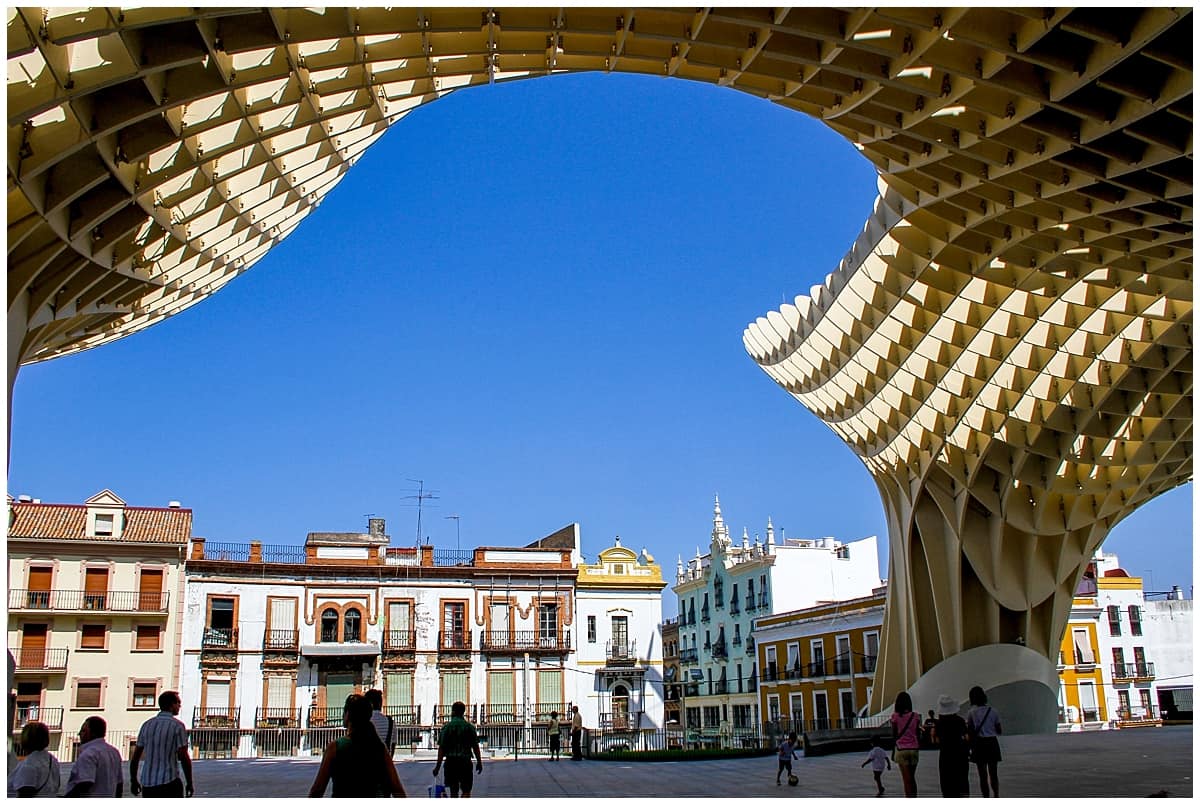
Espacio Metropol Parasol
Yet for all the tradition, those streets lined with oranges do carry the spirit of change. Seville has opened its arms to new flavours and features of late, from wasabi-laced tapas to the swirling silhouette of the Espacio Metropol Parasol.
Scorned by some for its drab-coloured walkways, there’s no disputing that the view from the top, which ranges from the Giralda to the plains beyond, is one of the best in the city. Nicknamed “the mushrooms” or Las Setas by locals, it’s opening in 2011 received a mixed reception (code for people didn’t like it.) Fast forward a few years and it’s one of the most popular things to do in Seville.
Designed by German architect Jürgen Mayer, the idea behind the Setas was to provide some shade in a scorchingly hot city. The design took inspiration from the vaults of Seville’s Cathedral (arguably the largest in the world) and the nearby ficus trees. The place is divided into four levels: the underground Antiquarium with Roman and Moorish remains, the Central Market at street level and the panoramic terraces and restaurant.
The Flamenco Museum
The Museo del Baile Flamenco takes you through the steps of Seville’s most famous dance to the soundtrack of stomping feet. Its rich visual display includes the costumes of some of flamenco’s biggest stars and it’s easy to understand how foreign visitors found the dance so overwhelming in the days before the internet and television.
If you can’t manage to catch a real performance (and you should try!) then a visit to this museum is one of the next best things to do in Seville. You can also book onto this tour via Get Your Guide to see a flamenco performance at the museum.
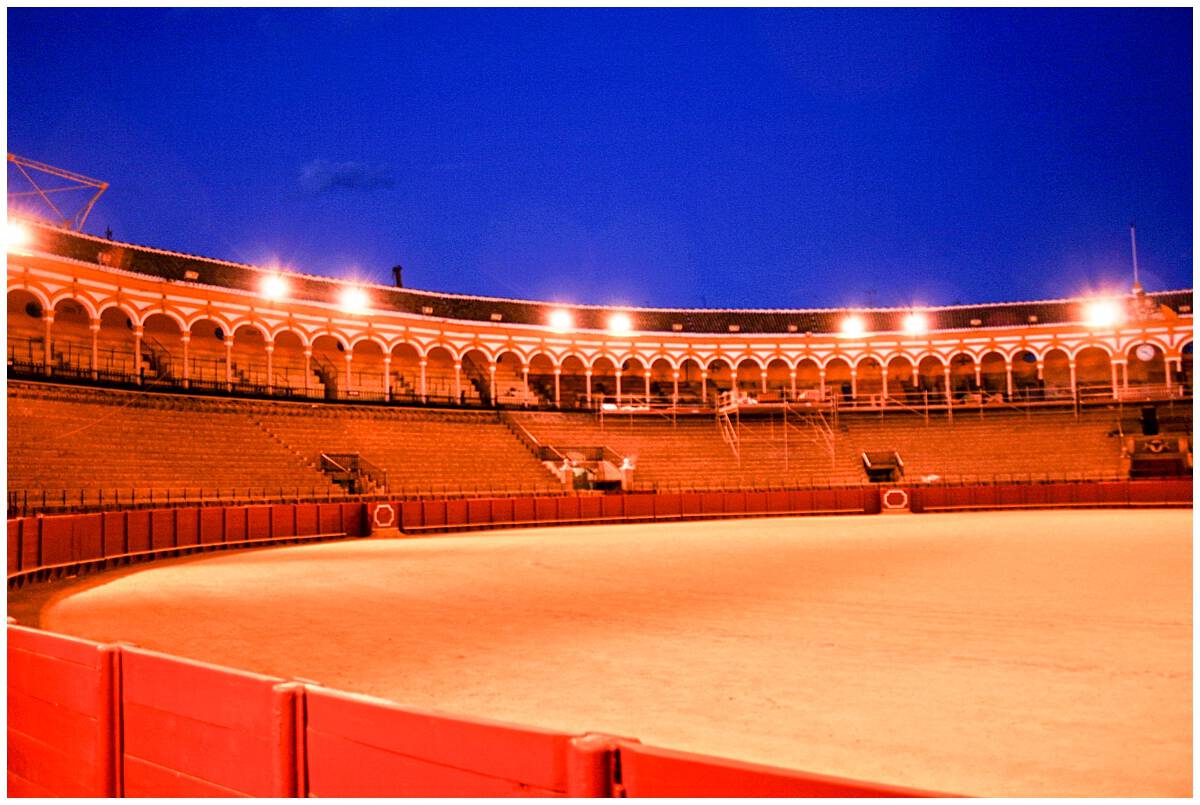
Plaza de Toros
Love it or loathe it, there’s no getting away from the fact that bullfighting forms a crucial part of the Andalusian culture. A visit to the 18th century riverfront bullring, the Plaza de Toros de la Maestranza reveals a fascinating glimpse behind the scenes, from the history of the tradition to the chilling dents in the gates left by charging bulls. You can even see the chapel where matadors say one last prayer before walking into the ring.
Museo de Artes y Costumbres Populares de Sevilla
For a look at how life used to be and the latest in temporary exhibitions, walk though the wide expanses of the Maria Luisa Park to visit the Museo de Artes y Costumbres Populares de Sevilla.
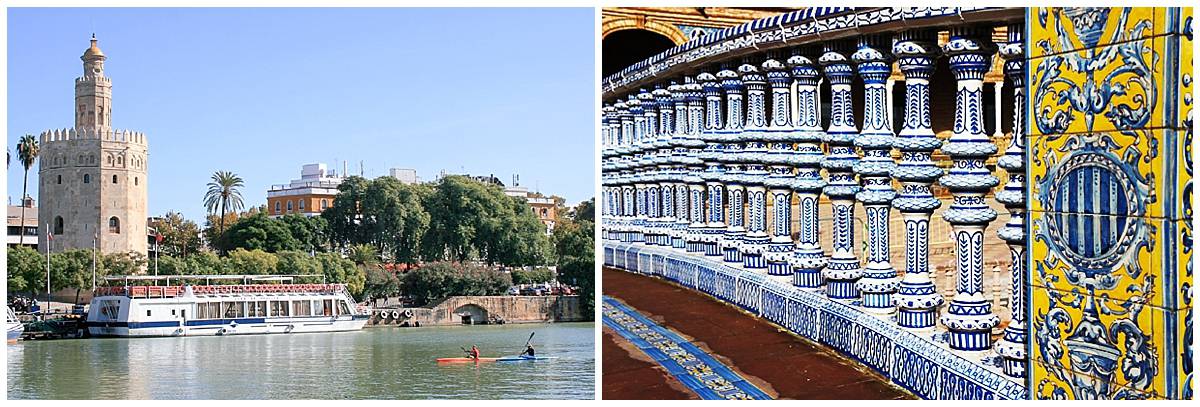
Maria Luisa Park and Plaza de Esapaña
Parque de María Luisa offers more than just fresh air and grassy fields. It’s an expanse of grand boulevards and botanical gardens with tiled fountains and ponds, native doves and parakeets. Stretching along the Guadalquivir River, it’s poignant to look at the water today and imagine Columbus setting off from here and the returning procession of ships carrying gold from the New World.
Grab a snapshot of Spain’s geography through the detailed curves of the Plaza de Esapaña, an extravagant sweeping crescent of a building constructed to celebrate the Ibero-American Exposition of 1929.
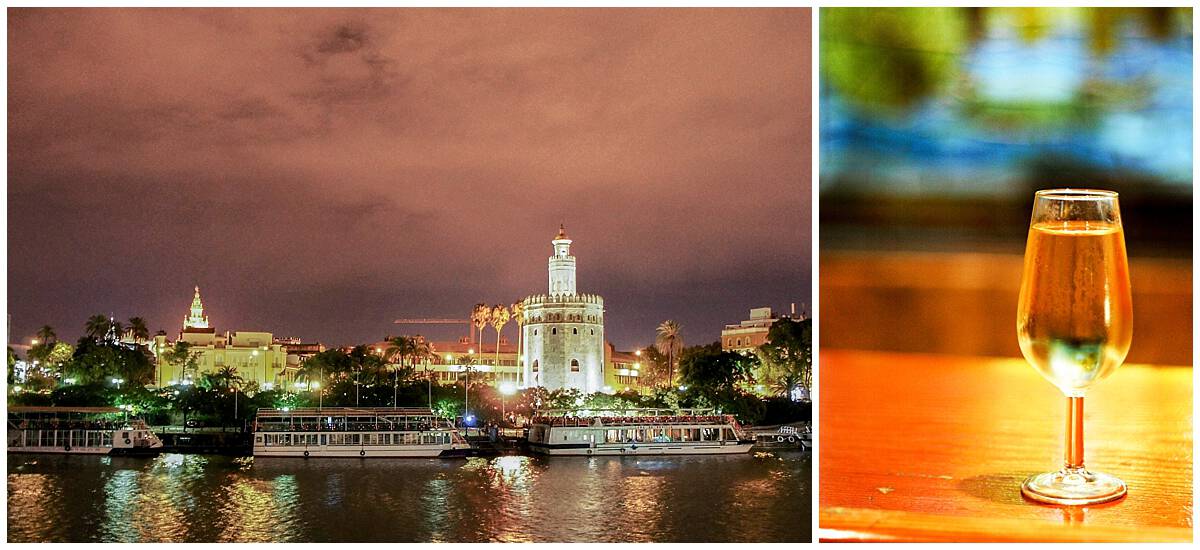
The Torre del Oro & A Riverside Stroll
As long as it’s not too hot, a walk along the Guadalquivir River carries a light breeze and provides a lovely view of Triana on the one bank and the tower of gold on the other.
Today, the tower of gold (Torre del Oro) functions as a peaceful landmark for people meeting for a night out. But it began life in 1220 as a dodecagonal military watchtower called the Burj Adh-Dhahab under the Almohad Caliphate.
After the Spanish conquest, this 13th century tower oversaw the ships that “discovered” the New World and which returned bearing gold that made Seville the most powerful city in the world at that time.
Look out for the new love padlocks on the Isabella Bridge. And don’t worry; you’ll find plenty of stops for tapas and cerveza along the way.
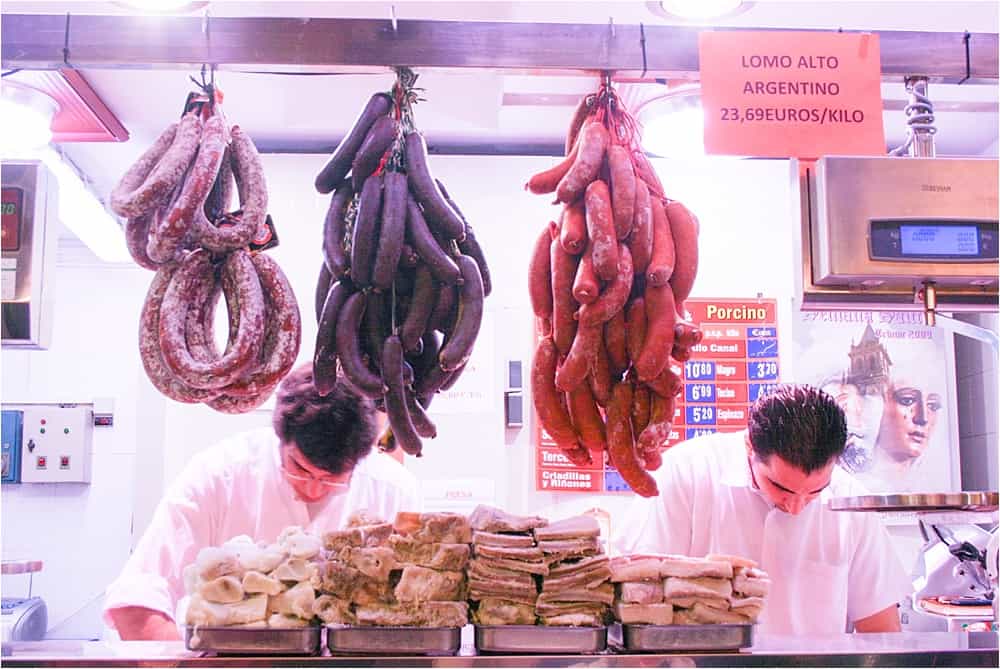
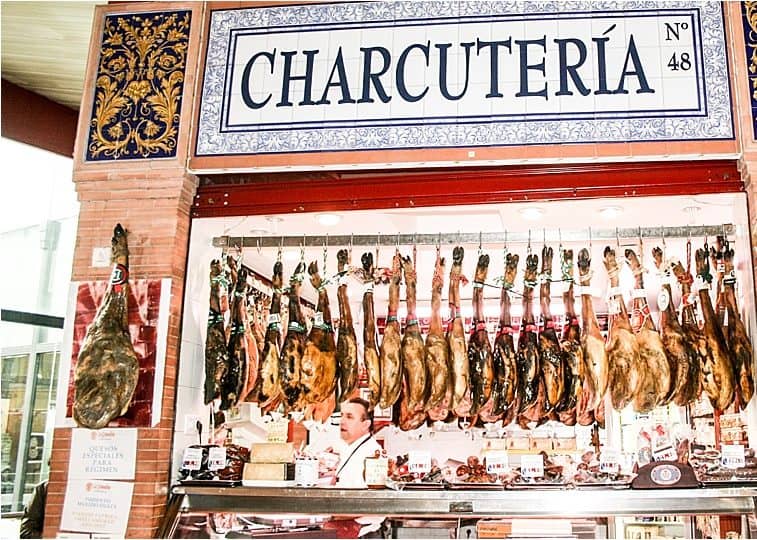
Triana District
Triana lives across the Guadalquivir River and was once considered the “wrong side of the tracks.” Here, working class sailors gathered to join the Columbus voyage and transport their striking accent to the lands of Central and South America.
It’s also the hotspot for ceramics, the Spanish equivalent of the famous azulejos tiles in Portugal. Artisanal workshops cram into white and yellow shadowed streets, selling souvenirs and authentic crafts. Visit the covered fresh food market and sip a cerveza looking back at the rest of the Seville. There’s so much going on, I’ve written a whole article on what to do in Triana.
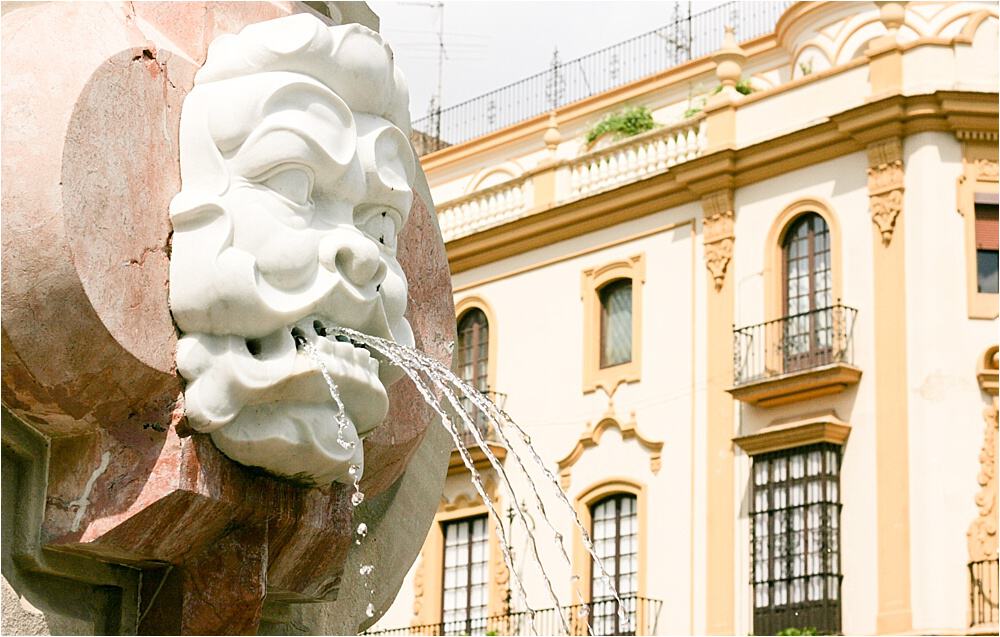
Santa Cruz Barrio
Wherever you end up, you can’t miss Seville’s Cathedral and its latticed tower, La Giralda. Beneath this landmark, you’ll find horse-drawn carriages, a thriving meeting point and the entrance to the Santa Cruz Barrio. This maze of white-washed streets is no place for maps. It’s a place for losing yourself amidst hot tapas and wild flamenco, small museums and Arabic baths. Simply put, some of the best things to do in Seville.
Seville Cathedral and the Giralda Bell Tower
The Cathedral of Seville and its elaborate tower, the Giralda, have become the symbols of the city. Visible from miles around, this beautiful landmark used to form the minaret of the mosque that stood here before the Catholic Monarchs drove the Moors from southern Spain. A close look near the top reveals the line where the Moorish mosque ends and the Christian ornamentation begins.
Inside, you’ll find crown jewels, gilded altars and the resting place (allegedly) of controversial hero Christopher Columbus. All within the largest Gothic cathedral in Spain.
This really is one of the best things to do in Seville and to miss it is the equivalent of missing the Eiffel Tower.
Real Alcazar
If you’re in Andalusia and you can’t reach the Alhambra, Seville’s Real Alcázar is the next best thing. Extensive Moorish fountains, carvings and patios plus a few resident peacocks make it a refreshing break from the scalding streets of Seville. It’s also a UNESCO World Heritage Site, which isn’t too shabby.
Skip the queues
If you’re heading to Seville in the summer months, then I’d recommend skipping the queues at the Real Alcazar by booking your ticket in advance like this.
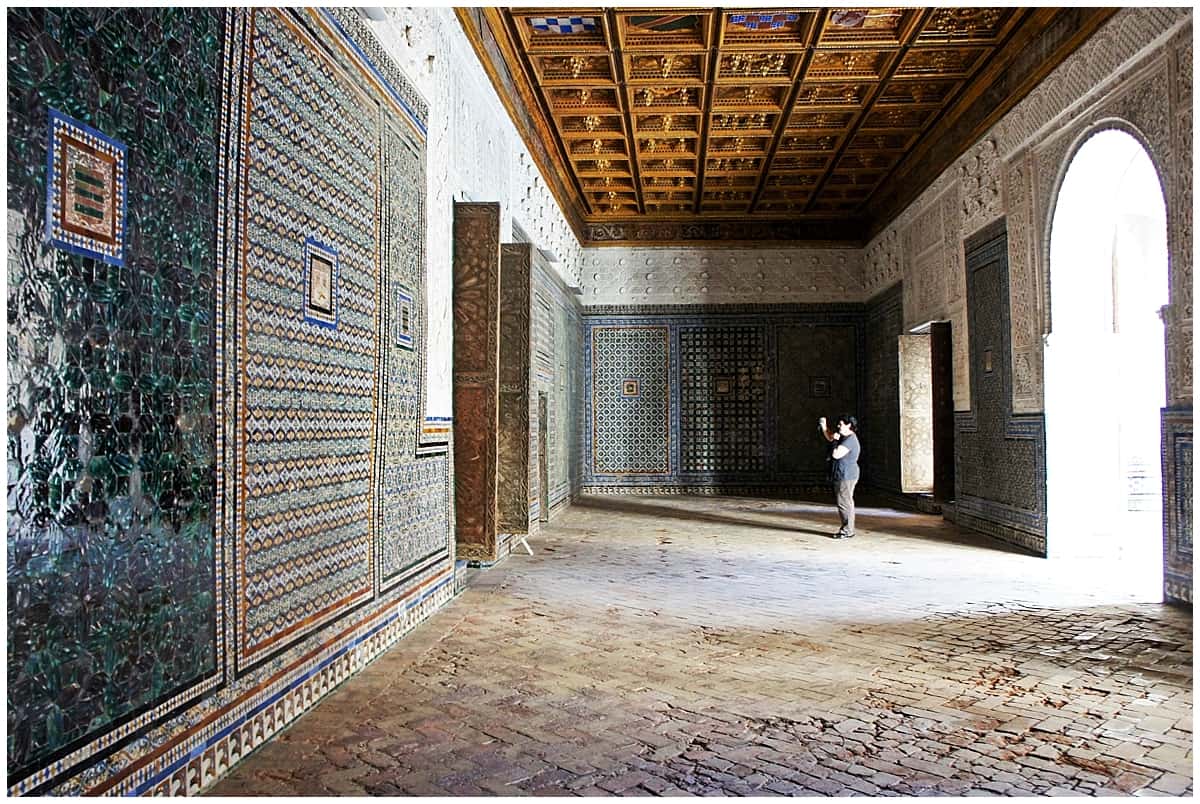
Casa de Pilatos
Drop down again in scale to appreciate the small but exquisitely formed Casa de Pilatos. This casa showcases the elegance of Seville’s old mansions, with interiors heavily influenced by Renaissance, Gothic and Mudejar styles and with fragrant gardens providing relief from the heat.
Isla Magica
Built on the former grounds of the ’92 World Expo in Seville, the Isla Magica theme park is one of the top attractions in Seville. Yet, if you’re short on time, I’d advise skipping this rollercoaster zone for some of the historic buildings and great tapas centres in the centre.
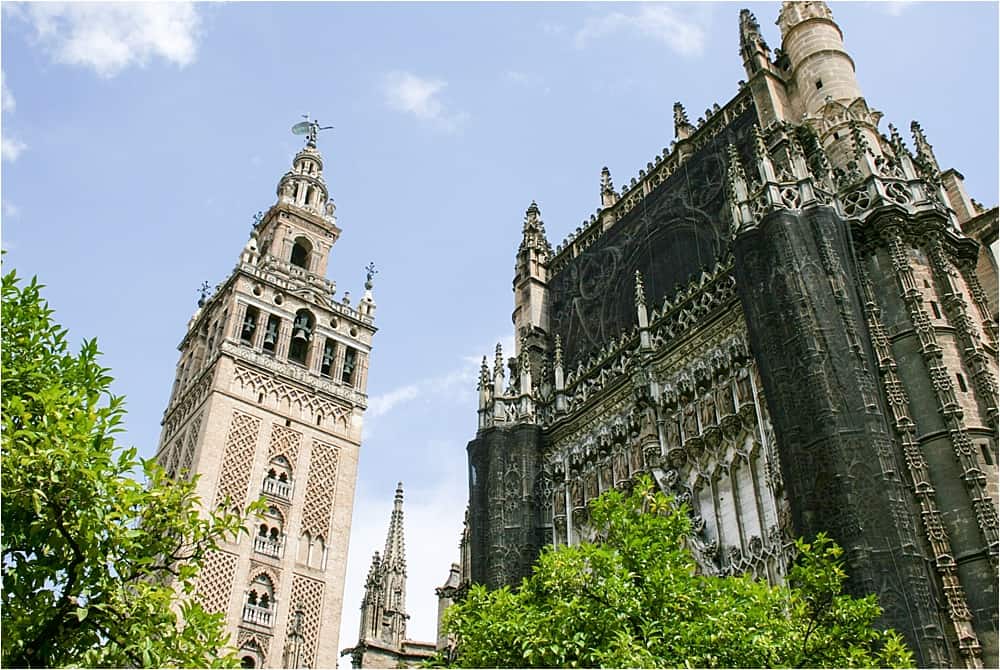
The Best Things to Do in Seville
Some of the best experiences in Seville don’t involve her top attractions. In between the orange trees and Maria Luisa Park, you can just while away your hours people watching and window shopping. Or, to be more precise…
Eating Tapas in Seville
Sipping cerveza or fino sherry and sharing tapas while the sun settles its furious hot bones into the sky remains one of the best things to do in Seville. Albondigas, olives, gambas and more. The pastime requires an article all of its own.
Souvenir Shopping: Fans & Flamenco Aprons
Shopping for souvenirs in Seville can be great fun, the shops crammed into picturesque alleyways and barrios, the trinkets flamboyant – and oddly functional. Chances are you will need a fan during your time in Seville and if you hang around for Semana Santa and then Feria, you’ll need a spotted dress too.
- Head to this guide on shopping in Seville for everything you need to know, including Spain’s favourite department store, El Corte Inglés.
Unusual Things to do in Seville
Find more hidden gems in Seville here.
Modern Art at the Instituto de la Cultura y las Artes
For the latest in Seville art and culture, check out the exhibitions staged by the Instituto de la Cultura y las Artes. There you can find information about theatre performances, photography, music and fashion.
Take an Arabic Bath in Seville
Both the Romans and the Moors embraced the idea of public baths with alternating hot and cold plunge pools, so it’s them we have to thank for Seville’s relaxation options today.
The Baños Arabes known as Aire Sevilla are some of the best, tucked away in one of the narrowest streets in the Barrio Santa Cruz. With low lights, incense and sweet cold apple tea, the atmosphere alone makes muscle tension melt.
But it’s the sense of history that completes the experience. The baths live in the former mansion of a Viceroy to the Indies, on a site that actually used to be a hammam – and Roman baths before that.
Try the Thousand Shower steam room, hydro-massage bath and saltwater pool before gearing up for the real temperature challenge: the tepidarium at 36 degrees, the calidarium at a scorching 40 degrees and finally, the frigidarium at a ludicrous 16 degrees.
Do you need to take a guided tour in Seville
Do you have to take a guided tour in Seville? Absolutely not! The centre is compact, the people friendly (if rather direct) and it’s an easy place for people travel around independently.
However, guided tours can bring great depth to your trip to Seville.
I’d recommend booking through someone like Get Your Guide. You can do this on your mobile phone (with an offline version) and cancel for free up to 24 hours in advance. I’ve had a look at the tours they offer and these are the ones I’d recommend.
If you book or buy through these links then I’ll earn a small commission at no extra cost to you. So, cheers for that!
- Skip the queues for the top sights in Seville: this guided tour takes in the Cathedral and Giralda and neighbouring Real Alcazar.
- If you just want someone to take care of it all, you can book a full day tour of Seville through Get Your Guide as well.
Seville in August: the conundrum
Spain in August is different to the rest of the year. In many parts, cities close down as everyone heads to the beach. And Seville is no exception. In fact, it’s the leader.
“Only mad dogs and Englishmen go out in the midday sun.” So the saying goes, but in Seville, even the mad dogs know when it’s time to stay indoors. With summer temperatures soaring over the 40 degree mark and no rainfall in sight, almost everything in central Seville is designed to keep people cool.
What is Seville like in August?
The streets of Santa Cruz crowd together to keep out the sun. Blinds are drawn and curtains pulled to keep the light outside. Machines spray water into the alleyways, creating a cooling mist for passersby. While modern hotels now have air-conditioning, many still live in former mansions or palaces, which relied on design to keep them cool.
That’s why you see so many marble floors and open courtyards, with cloisters providing shade from the sun. And that’s why so many central fountains flow to add moisture into the air.
The importance of the siesta
That’s also the reason behind the siesta – and why dinner doesn’t start until after dark. It’s hard work simply being in the midday sun in Andalusia. Far better to rest when you can and to save yourself for the night.
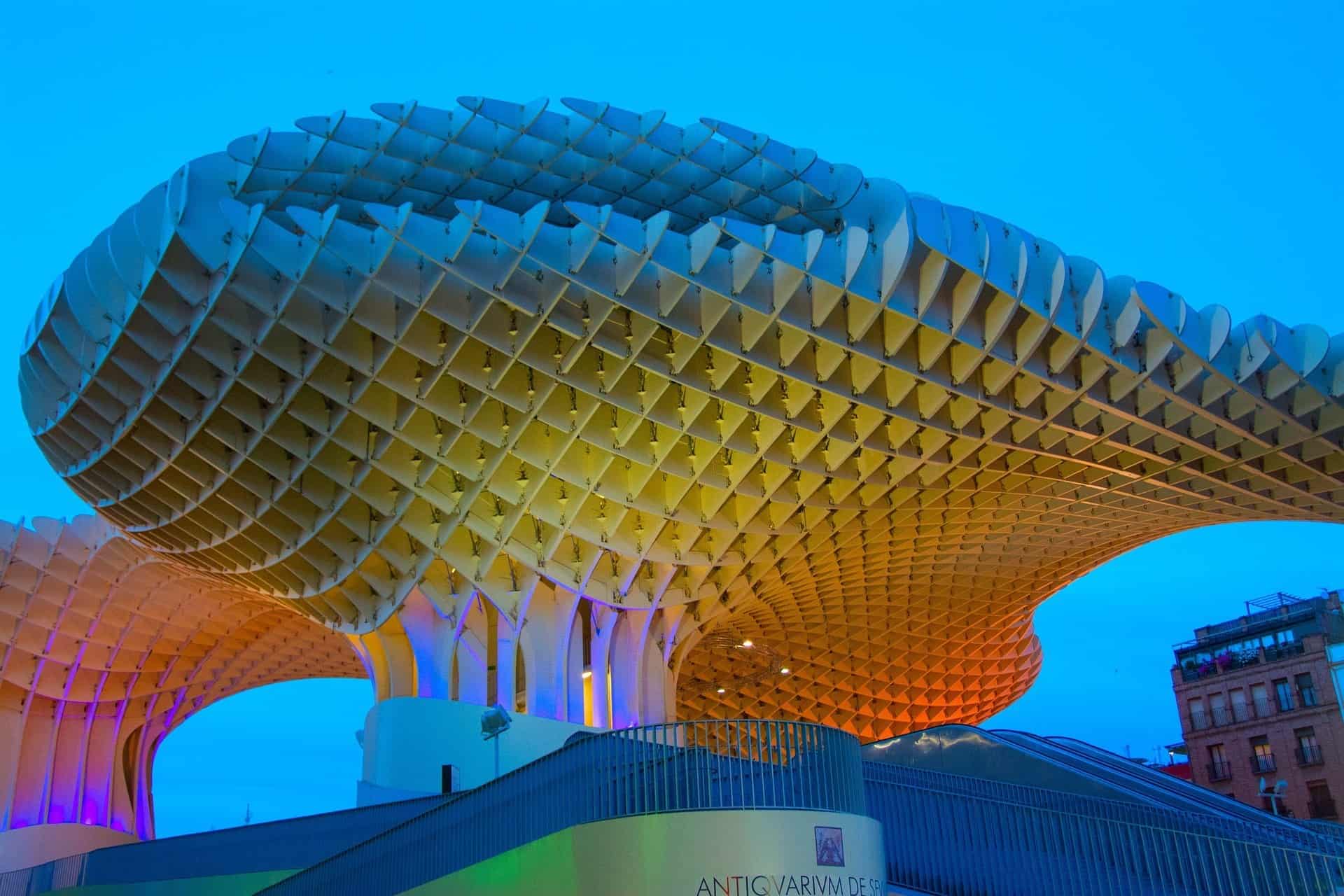
Seville at Night
In a city where dinner rarely starts before ten, the whole article could have been called things to do in Seville at night.
Yet Seville’s nightlife isn’t reserved for youngsters – you’ll find children and grandparents tucking into tapas at midnight and beyond, as well as adults enjoying free-flowing wine. With the crazy heat that Seville endures throughout much of the day, it’s no wonder its streets come alive at night.
How to Keep Up
You might want to follow a tip from the locals and squeeze in a siesta. Dinner’s nearly impossible before half past eight and most places aren’t buzzing ‘til ten. Even the spas stay open until midnight, in case you fancy a late evening soak.
Don’t worry about missing the nightlife, though. Live music doesn’t kick off until late at La Carboneria, while clubs like Kudeta are open until dawn.
Live Flamenco
La Carbonería has one of the most laid back vibes in town – except for when there’s a live flamenco performance on. A world away from the image of spotted dresses and castanets, flamenco here is dark, soulful and serious.
Occasionally, you’ll catch a sevillana performance, a lighter (and some would argue) more enjoyable form of dance. It can be quite hard to find, though, which is part of its appeal, of course.
Here’s how to find your way to authentic flamenco at La Carbonería. And if you can’t manage that, you can always visit the Flamenco Dance Museum by day instead and book into a flamenco show there.
Seville’s Version of a Sports Bar
Bodeguita Casablanca offers up a hearty, no nonsense bar experience within easy stumbling distance of the cathedral and Santa Cruz. With staples of jamon hanging from the ceiling, framed photos of bullfighting on the walls and either football or the latest bullfight on TV, it’s the Sevillano equivalent of a local English pub.
The Best Rooftop Bar in Seville
For an upmarket sip of fino sherry while the sun sets over the Giralda, you can’t beat the rooftop bar at the Dona Maria. It’s one of the top things to do in Seville and certainly one of my favourites. I could close my eyes, sip fino and imagine I’m right back there…
Paddleboard at Sunset
Seville’s river view from the Guadalquivir looks much the same as it did when Christopher Columbus set sail. But you can see it from a paddleboard as the sun goes down. Here’s where you need to go to make the paddleboarding happen.
Practical Information for Seville
Getting Around Seville
If you can take the heat, you can explore the whole city on foot, zig-zagging between shops and museums with the odd pick-me-up of hot chocolate and churros. Seville’s metro, while new and clean, misses off most spots that visitors want to see. Taxis struggle in the tiny streets of the older barrios but you can take a taxi from the airport or main station to the edge of the older parts.
Where to Stay in Seville
Seville overflows with beautiful hotels with central courtyards, fountains and ceramic tiles. Read my guide on where to stay in Seville here. The city’s absolute favourite is the Hotel Alfonso XIII.
When to Visit Seville
If I’ve said it once, I’ll say it a thousand times! Don’t visit in August! It’s way too hot and the drains spill over and the city smells. Seriously, the temperature can reach about 50 degrees and rubber melts of tyres and candles melt into puddles. Few places have air conditioning that can reach below 30 and, well, it’s just not the best time.
Visit between May and June and then September and October to see the best of Seville. Winters are mild but still cool and often wet. Read more about summer in Spain here.
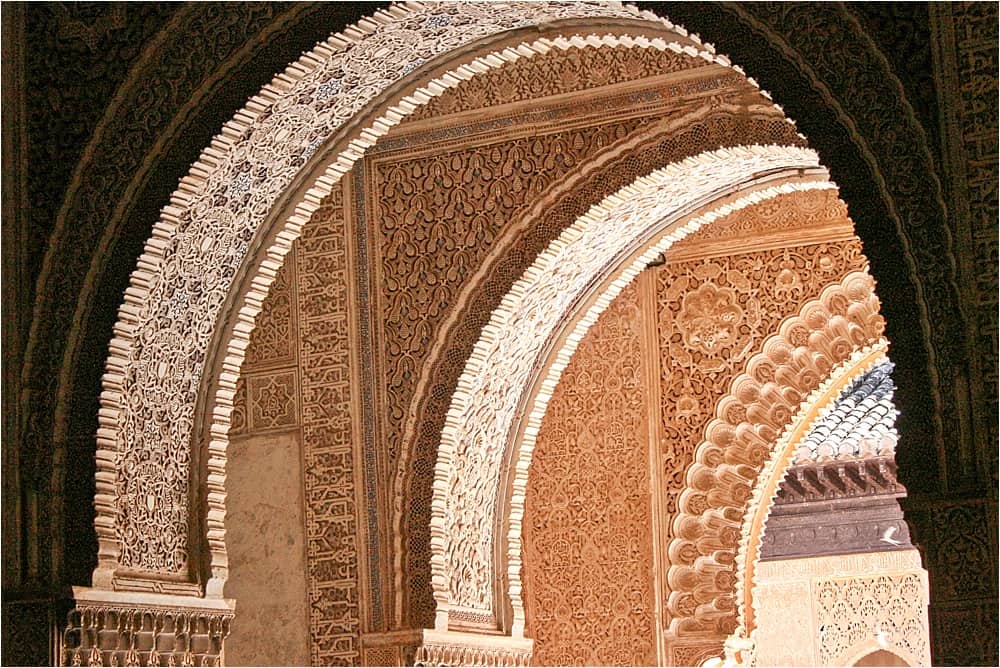
The Best Day Trips from Seville
Olive groves, scented blossoms, mysterious caves and snowy peaks await as day trips from Seville. It’s surrounded by UNESCO World Heritage Sites and some of the most spectacular cities in Spain.
The Alhambra, Granada
UNESCO World Heritage Site and dazzling, ornate palace in the hills. “Do not weep like a woman for what you could not defend as a man.”
The Mezquita, Cordoba
One of the most beautiful buildings I’ve ever seen. A mosque that was converted into a cathedral and another UNESCO World Heritage Site to boot.
Doñana National Park
Spectacular wetlands with flamingoes and the nearby Hermitage of El Rocío with its candle-lit vigils and stay-on-your-horse bar.
Italica
Travel further back in time to Italica on the outskirts of Seville. Crumbling columns, coloured mosaics and broad walkways all whisk you back to life in Roman times a few thousand years ago.
Travel Tips for Seville
The number one travel tip for Seville is to avoid August if at all possible! It’s far, far too hot. After that, here’s what I shared with my friends:
- Bring comfortable walking shoes. The heat and cobblestones in the city centre can mangle even the youngest of feet.
- Don’t forget a travel adapter. A standard European plug or worldwide adapter like this will do.
- Bring a sun hat in the summer. Seriously, this place gets hot!
- Avoid the tapas bars close to the cathedral. Just a few blocks away lie treats for your stomach and eyes.
- Leave space in your suitcase. Seville souvenirs move beyond the trashy (although, those can be fun!) and firmly into the foodie and art realm.
- Consider extending a city break to Seville with a driving holiday or road trip around Andalusia. Alternatively, link to Madrid by the super-fast RENFE train. It’s comfortable and luxurious and a world away from train travel in Britain…
- Get ready for a slower pace of life – except for on the roads and in the bars. Be firm and fast to respond, but shrug off any overtaking with good humour. It’s part of the adventure.
- Get ready to eat late at night.
FAQs About What to do in Seville
How many days do you need in Seville?
You could spend a week in Seville as a base, with a few day trips added in. If you’re short on time or putting together a road trip throughout Spain then I would suggest you spend at least two days in Spain.
What things can you do in Seville when it’s raining?
Despite the heat, it does rain in Seville. And when it rains, it rains a lot. But not to worry, there are actually loads of things to do in Seville when it rains. For a start, the large cathedral and La Giralda. Secondly, you can take shelter in Triana’s market and even take a cooking class there. Thirdly, head into one of the many museums – or even spend the day on a tapas tour. Honestly, it’s one of the things locals do…
What is Seville famous for?
Seville is famous for many of Spain’s icons: flamenco, the opera Carmen, the launch of Christopher Columbus’ voyage, the largest cathedral in Christendom and a traditional tapas scene.
What should I know before travelling to Seville?
A few things. First, that summer is hot, hot, hot and air conditioning is scarce. Secondly, you’ll need a European adapter. Dinner and entertainment takes place late in the evening and body language is loud and raucous. People are friendly but very direct. Seville is not a place for the shy!
What are some fun things to do in Seville?
Ah, there’s so much fun to be had in Seville! Spain is a place that loves to party and you’ll find tapas bars to suit every budget and taste. Check out my guide on what and where to eat in Seville here.
What things can you do in Seville on a Sunday?
A lot, actually! Seville’s grand cathedral is still open, as is the landmark Maria Luisa park and Plaza Espana. The tapas scene never quietens down and you can walk along the river, taking in the views of the Torre del Oro and old quarter at any time of the week, day or night. Likewise, the Jewish Quarter forms a fascinating base for exploration on a Sunday. Enjoy!
The Best Things to do in Seville in Summary
Seville really is a fascinating city. It’s where many of the legends (and stereotypes) of Spain exist and it’s perfect for a weekend break or as part of a longer road trip. I loved living there and hope to get back soon. Wishing you all the best as you plan your trip to Seville!
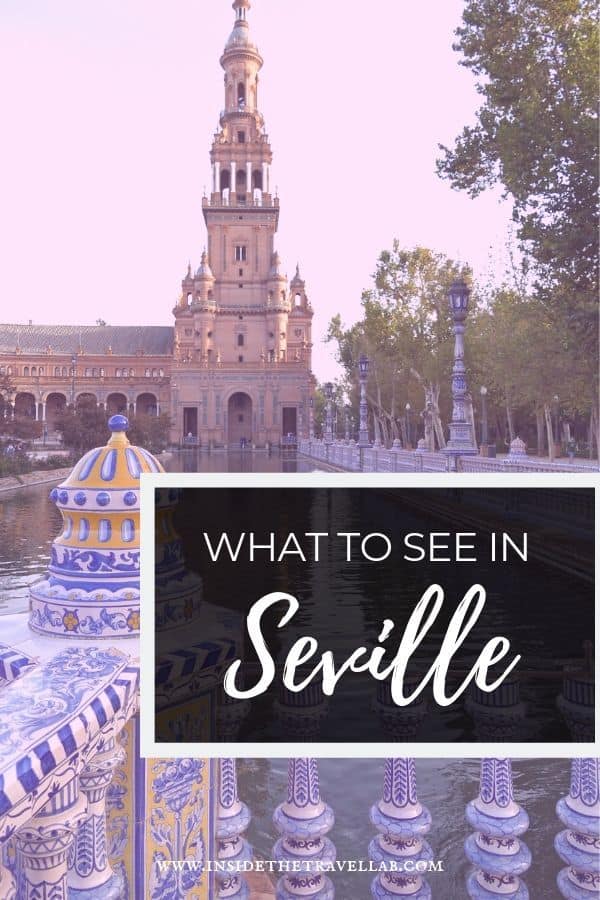
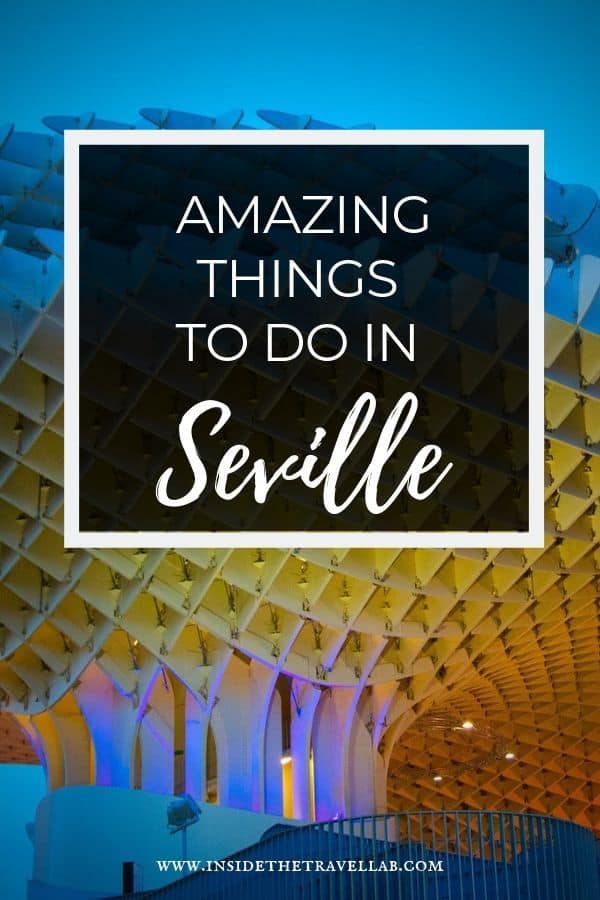
Read more about Seville
- 21 Hidden gems in Seville
- What you need to know about Holy Week in Seville
- What to do in Triana, Seville’s wild side
- No8Do in Seville: the city’s secret code
- The best tapas bars in Seville: the 15 dishes you need to try
- What to buy in Seville: the souvenirs to bring home
- Where to stay in Seville: the best neighbourhoods to know
- How to pronounce Seville the right way
- The best food markets in Seville
Plus, get your free Seville checklist here.

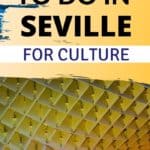
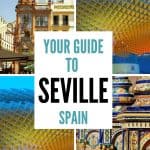
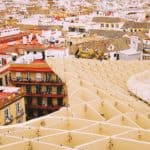
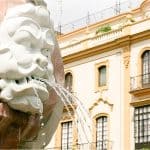

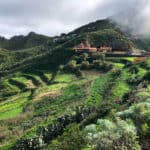
Hi
If you want to fully understand Sevilla,Granada and Cordaba
You should visit also Morrroco
They compleats perfectly each other
Very true! I returned to Marrakech after living in Seville and was amazed at how similar some of the architecture was.
South of Spain and Morocco have a lot of things in common. Especially if we consider the architecture of historic cities such as Seville.
Yes, the architecture is definitely similar. The enthusiasm for life is similar too ;-)
I’d love to visit Seville, it looks amazing. I really like the idea of seeing a show at the flamenco museum.
It’s a fascinating city with so much history. Flamenco is not as much “fun” as I’d imagined – but it’s incredibly moving.